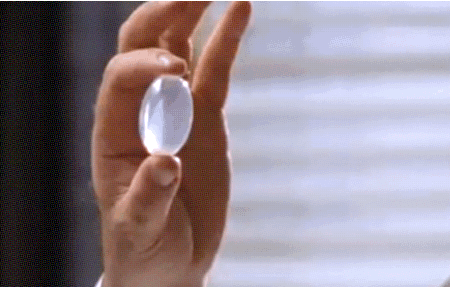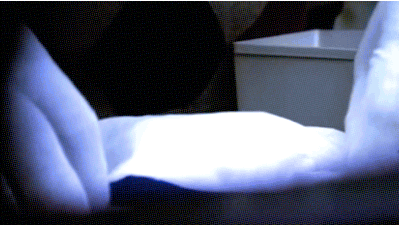Carpe testes.
Hey, gang. Serious question: How are your balls doing?
Feeling a little tender? Heavy? Got a surprise triplet down there? What you’re feeling could be a symptom of testicular cancer.* Check in with your doctor and see if a testicular self-check regimen would be a good thing for you.
*Spoiler: It’s probably not cancer, but better safe than sorry!
Testicular self-checks can be a mysterious thing. They’re just balls, right? Why bother?
BuzzFeed Life spoke to Dr. James McKiernan, urologist-in-chief at New York–Presbyterian/Columbia University Medical Center, and Dr. Brad Leibovich, the chair of urology at the Mayo Clinic, to figure out the whys and hows of carpe-ing your testes.
Men in their twenties and early thirties — aka men who least expect it — are more likely to get testicular cancer than men of other age groups.
http://instagram.com/p/01iXQ5on_f
“Young healthy men don’t usually get cancer,” says McKiernan, “but if they’re going to, the number-one cancer they get is testicular cancer.” In the U.S., 5 out of 100,000 men are diagnosed with it, says Leibovich, most often in their twenties and early thirties. There’s also a second window of frequency in your fifties, but most diagnoses are made in the younger years.
More specifically, white men tend to be diagnosed more often.
According to McKiernan, certain ethnic groups are more predisposed to testicular cancer. “Most cancers in the U.S. are actually more common in African-Americans than in caucasians,” he says. “But testicular cancer is dramatically more common in caucasians, by about tenfold, than in African-Americans.”
It’s also a matter of national population. For whatever reason, Denmark, Norway, Finland, and Sweden see really high rates of testicular cancer diagnoses. “No one’s sure why,” says McKiernan. “Maybe it’s genetics, maybe it’s environmental, maybe it’s a little bit of both.”
There are a few risk factors that result in testicular cancer, but none that are within your control.
According to McKiernan, when it comes to testicular cancer, there’s no universally agreed-upon modifiable risk factor — a risk factor that you can adjust or improve upon by doing something like quitting smoking or .
Leibovich says there are some risk factors that lead to testicular cancer you can’t change, like having an undescended testicle, abnormal testicular development, or having a primary relative who has been diagnosed with testicular cancer before.
But here’s the thing: testicular cancer is actually relatively rare. And it’s very curable! According to Leibovich, there are about 8,500 cases in the U.S. annually, and fewer than 400 fatalities, giving testicular cancer the highest cure rate of all cancers.
In the rare event that it does occur, testicular cancer can sneak up on you without any warning.
Like any other cancer, testicular cancer can spread from one area to another — often without presenting symptoms. Lance Armstrong began coughing up blood after a 100-mile bike ride. He went to the doctor and was diagnosed with metastatic cancer that had spread without him noticing.
Once the cancer begins in the testicles, the next stop is often the lymph nodes, says McKiernan. Then it’s the lungs, and then it can almost go anywhere. “The brain, the liver, you can get some pretty serious symptoms, if it gets in there,” he says.
Testicular cancer treatment can have some shitty side effects on the rest of your body.
Sure, testicular cancer is curable, but the long-term side effects of treatment can be tough. It’s not just about the financial cost or the time it’ll take, but treatment can potentially hurt you, too.
“The cost of the cure, for instance in chemotherapy, is a dramatic increase in developing a heart attack 20 years later or developing another cancer,” says McKiernan. “So you can really lose out if you have to be treated for a high-stage testicular cancer versus low-stage.”
Not to mention your self-esteem.

HBO
The first step of treatment is to remove the affected testicle, says McKiernan. “Only about 1.5–2% of patients will actually get it in both testicles, which is thankfully very rare, but significant because doctors will have to remove both, which has a dramatic impact on hormonal and sexual function,” he says.
Naturally, losing a ball or two can be a big deal to some guys. “It’s a pretty psychologically and physically traumatic process,” says McKiernan. “In my experience, about 25% of men will request to have an artificial testicular implant at the time of surgery. Of course, implants have no hormonal function or do any of the things testicles do.”
All in all, catching testicular cancer early can save you loads of time, money, and anxiety in the long run.
http://instagram.com/p/1RBF1fEIdn
One way to potentially do that is by performing testicular self-checks. That said, testicular cancer self-checks are sort of controversial. According to Leibovich, the U.S. Preventative Services Task Force gives a testicular self-exam a D rating, which means it thinks a testicular self-check has no actual benefit and makes you worry for no reason. McKiernan says some agencies believe the utility of a self-exam is not enormous because the frequency of testicular cancer is very low and, thankfully, it’s curable.
But as with any medical condition, the key is early diagnosis. Leibovich says that by educating men about what’s in their scrotums in the first place — what to look for and how to look for it — they will be encouraged to see their doctors for check-ups and not delay a possible diagnosis.
“There are people who say, ‘Look, telling guys to check their testicles is a waste of time because even if the cancer has metastasized, you can still cure them,’” says McKiernan. “But I don’t really buy that because the burden of treatment for metastatic cancer is much higher. If you’re diagnosed with this, you’d much rather be at stage 1 than stage 4, even though they’re both relatively curable.”
So how DO you check yourself for testicular cancer?

Here’s Dr. McKiernan’s advice on how you can check your balls for lumps:
Each testicle is shaped like an egg. If you were to hold a hard-boiled egg in your hand, that’s what your testicle roughly looks like. There are variations on shape and size, but it’s an elliptical spherical object that sits inside the scrotum. The scrotum, which is the skin of the sac, has no issues; there’s no cancer of the scrotum. It’s the egg, if you will, inside that sac.
What you wanna do is feel all surfaces of that egg. The testicle itself will feel like that hard-boiled egg; it has a certain rubbery consistency to it. What you’re feeling for is an area on the egg that feels like somebody left the shell on.
Imagine: someone gives you a hard-boiled egg and half the shell was still on it. If you closed your eyes, you could find that half of the egg and say, “Yeah, there it is. There’s a hard spot.” So that’s what a tumor feels like — a dense hard spot that doesn’t give when you squeeze it.
Your first self-check is a getting-to-know-you stage.
It’s like your first date with your balls. You have to get to know each other a little bit, figure out what’s normal for you and your testicles. This baseline physical exam is best done as a three-way date: with a doctor.
“Together, you and your doctor can determine what’s normal for you, then from then on you can see what is not normal,” says McKiernan. “So that the next time you check, if you feel something totally different, you’ll know that there’s a difference. The change is what you’re looking for. You’re looking to say, ‘Oh, that’s not what I felt last month. This is different, this was never there before.’”
But don’t check yourself TOO often! Once a month is enough.
http://instagram.com/p/0SfWwYKV-j
The idea is that if you meet someone today and you meet them again in a year — and in the meantime they’ve put on 50 pounds — you’ll notice that weight gain, says Leibovich. If you see them every day, you’re not gonna notice that gradual change. If something is changing slowly in the scrotal examination and if you self-check once a month, you’ll notice the difference.
“I tell guys to do it when the phone bill arrives,” says Leibovich. “That way there’s a sort of a monthly clue.”
When you do discover something unusual, don’t hesitate to go to the doctor.
http://instagram.com/p/1uNeRsuzCp
Let’s say you’re doing your monthly self-checks like the smart healthy guy that you are. Then you notice unusual deviations from how your balls normally feel: There’s a tenderness to your testes, a heaviness or ache to your balls, a new lump that was never there before. What do you do?
That’s when you talk to your primary care doctor who’s also familiar with your body. They can confirm what’s up. “If there’s any ambiguity, we do a simple non-painful sonogram or ultrasound,” says McKiernan. “If there’s a problem, it’ll show up really easily on a sonogram. And then you’ll be referred to an expert or a surgeon.”
Remember: Before you lose your balls, have the balls to go to the doctor!
Call it “manning up,” call it “castration anxiety,” but it seems as though it’s true that a lot of men avoid going to the doctor at all costs. According to McKiernan, published data on delayed testicular cancer diagnoses says the average length of time men wait after finding a testicular tumor and calling the doctor is about three months.
“Some guys come in and say, ‘I have a lump on my testicle,’ when in fact the lump is the size of a grapefruit,” says McKiernan. “You say, ‘How long has this been there?’ They say, ‘Off and on for a year.’ You wonder, ‘Why did you wait? Was it something you thought was natural?’ People sort of say, ‘I thought it would go away, maybe it was a bruise or an infection,’ or ‘I got bumped playing basketball.’”
Whatever ball game is at play here, it’s always best to go to your doctor for any concerns. Reluctance to seek medical advice might lead to a delayed diagnosis and possibly more treatment when the cancer is discovered, says McKiernan.
So grab your balls by the balls! Schedule a physical check-up with your doctor and get to know what’s normal for you.
Carpe testes, gang.


















